Winners of the 2020 HOME Competition speculate on the domestic space of the future
By Alexander Walter|
Monday, Jan 25, 2021

Related
The annual HOME competition asks designers to explore ideas of domestic architecture for the future, and the results of the 2020 edition are now in.
This year's jury, which included established architects like Peter Eisenman, Toshiko Mori, Neil Denari, Tatiana Bilbao, Vishaan Chakrabarti as well as emerging designers, selected the winning designs for each of the three main perspectives: innovation, adaptability, and pragmaticism.
Overall Winner: Shadow Housing
Participants: Jeffrey Liu & Haylie Chan
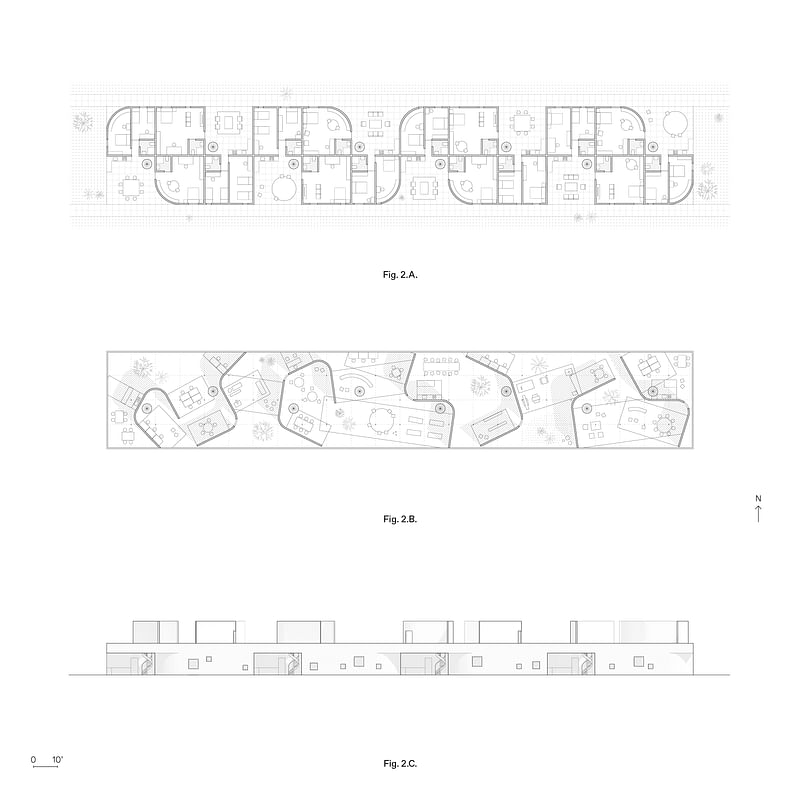
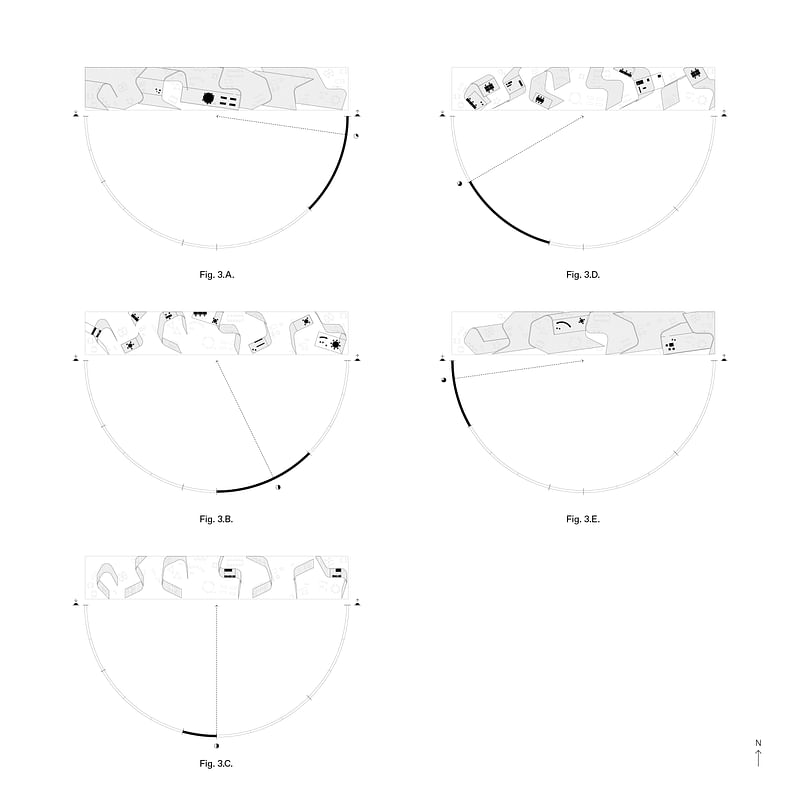

Project description: "Shadow Housing is a model for collective living in a post-pandemic era: an open-air live/work commons that configures new domestic schedules of work and care through an architecture of light and shadows. As COVID-19 ruptures the boundary between the office and the home, the available time for domestic labor such as cooking or childcare is being subsumed by a 'flexible' expanded workday.
While the eight-hour workday reflects an abstracted 'clock time' coextensive with the capitalist emphasis on productive labor over unwaged housework, Shadow Housing embodies a natural time that tethers the workday to the movement of the sun, establishing a spatial and temporal separation between work and the necessary labor of care.
Situated in the temperate, arid climate of central Los Angeles, Shadow Housing proposes a pandemic-safe form of outdoor co-living where daily activity alternates between periods of work and shared domestic labor as directed by shadow and sunlight. Above a ground floor of enclosed private units and semi-enclosed patio rooms shared by two units, the rooftop common space is composed from a series of walls angled to cast shadows, forming shaded outdoor rooms for work and collective care at designated times of day. Demarcated by lines that approximate the average shadow length and angle at the specified time of day, these spaces shift in and out of alignment with the casted shadows according to their scheduled time of use within a reconstituted workday."
Honorable Mention: Unhomeliness
Participants: BOJI HU & YA LIU
Honorable Mention: A House is Not A Property
Participants: Konstantin Kim, KaWai Cheung & Aleksa Milojevic
Director’s Choice: Responsive City
Participants: Jonas Swienty Andresen
Director’s Choice: Outre
Participants: Aditya Jagdale & Yu Qing Ma
Director’s Choice: A House for 4 Furnitures
Participants: Calvin Yang Yue & Taku Samejima
Innovation Award: Biohacker’s Residence
Participant: Samuel Esses & Jonathan Wong

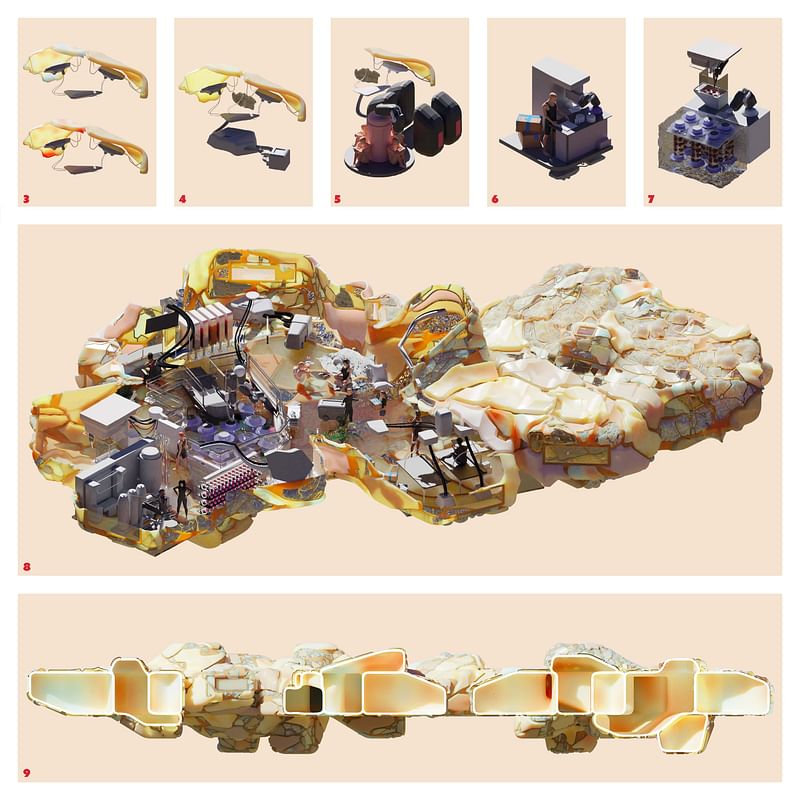
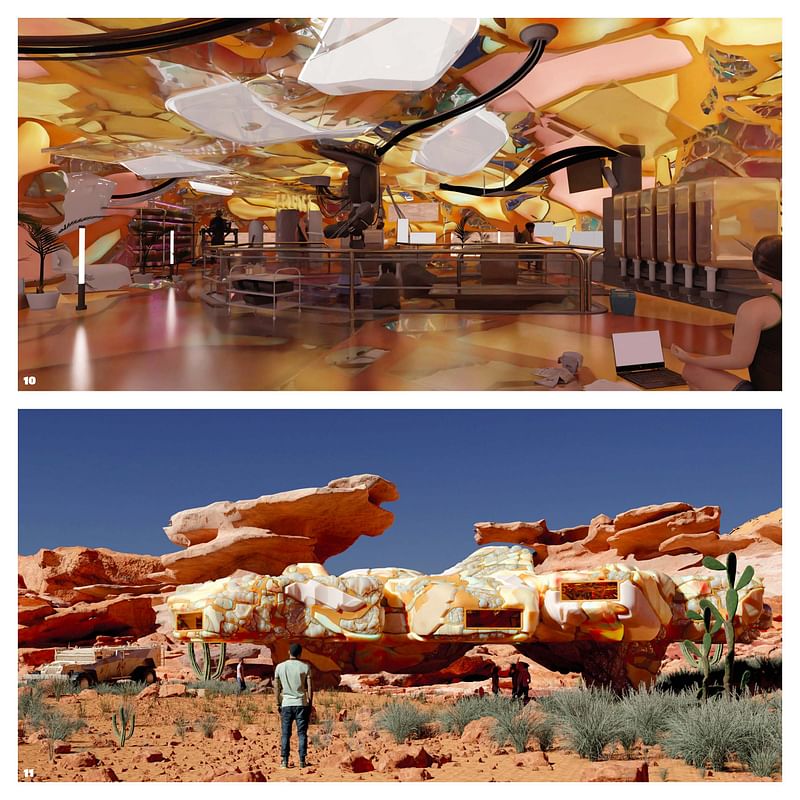
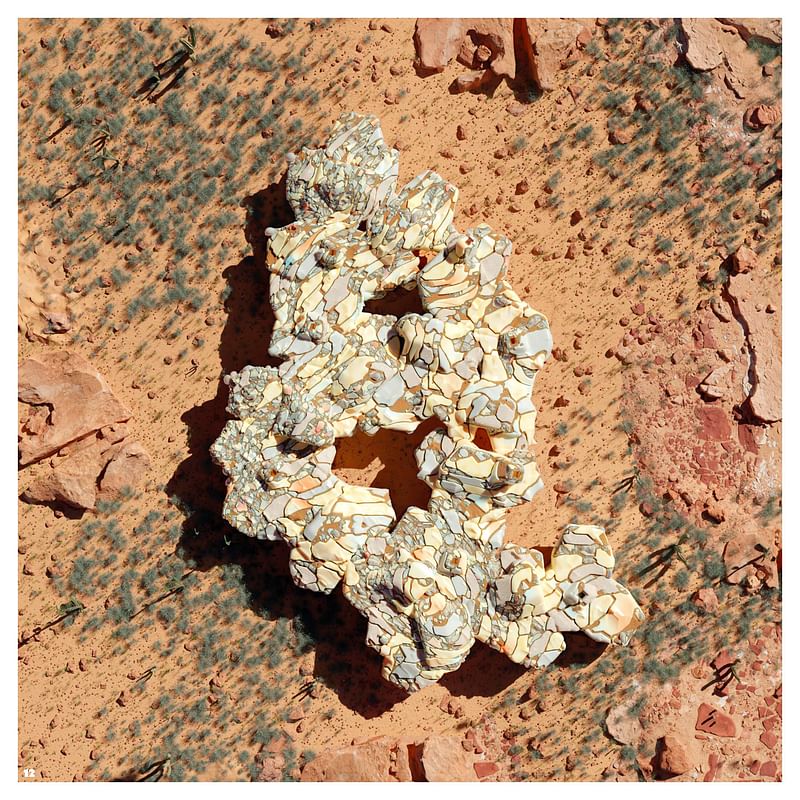
Project description: "Since the availability of home-use bio-technology kits, do-it-yourself biohacker
communities have surged along with an increasing synthesis between home and
laboratory. The ability to control and reprogramme your body is an uncharted territory
of personalisation and modification. Biohacker’s Residence is a communal retreat
for self-experimentation. It proposes a spatial technology to be optimised for the
augmentation of DIY hacking processes.
Organic 3D printing and CRISPR editing workstations merge with communal lounge
areas where hobbyists come together searching for self-empowerment. Biointegrated
materials are (re)programmed for environmental responsiveness, comfort
and sterilisation. Multimaterial cells integrate biological and synthetic materials
supporting a space of cellular modification.
As gene editing lies on the cups of legality and morality, biohackers head inland to the
redrock desert landscape of Utah for remote practice and self administration, where
they look to challenge what it means to be human."
Honorable Mention: Archiparago
Participants: Nai-Hua Chen & Eileen Xu
Honorable Mention: On the Road
Participants: Kathy Teng & Zhenqianhui Tong
Director’s Choice: Scatter House
Participant: Caroline Chao
Director’s Choice: Gimme Shelter
Participants: Baumgartner + Uriu Architecture
Director’s Choice: Bubble
Participant: Sidian Tu
Adaptability Award: Stuyvesanttown
Participant: Carla Bonilla Huaroc
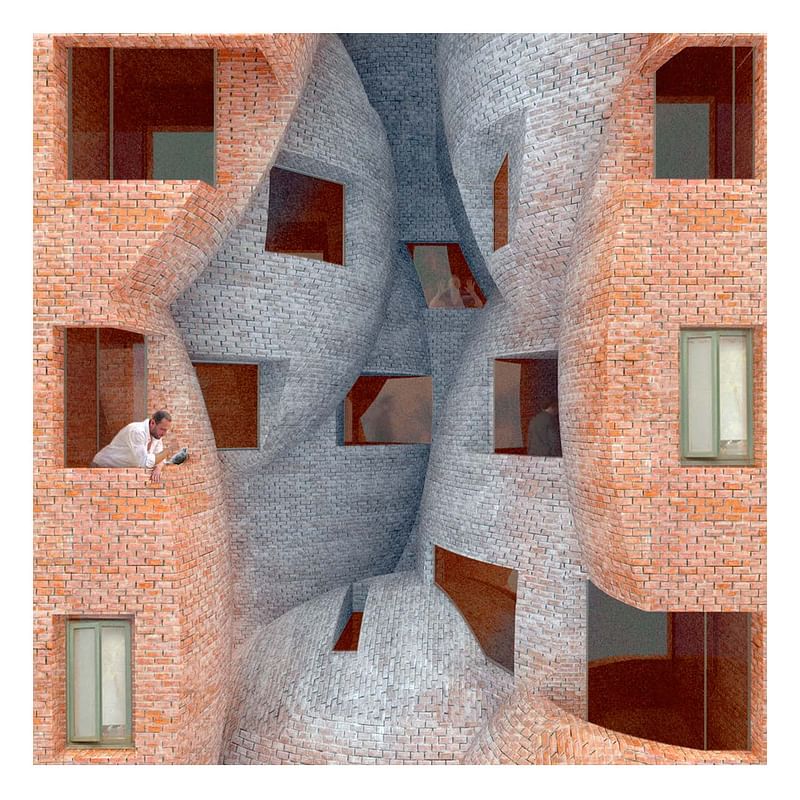
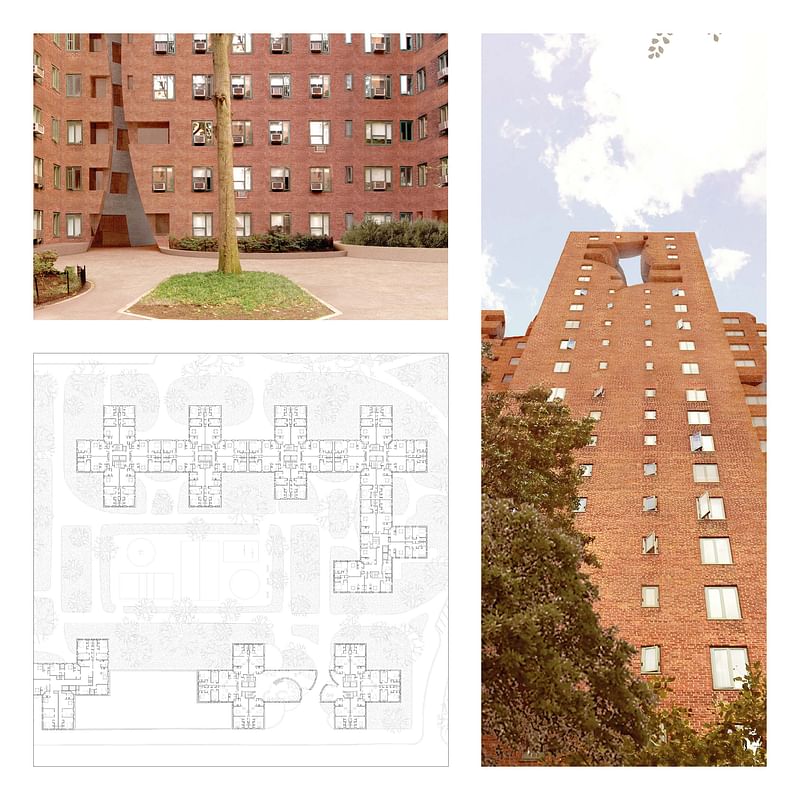
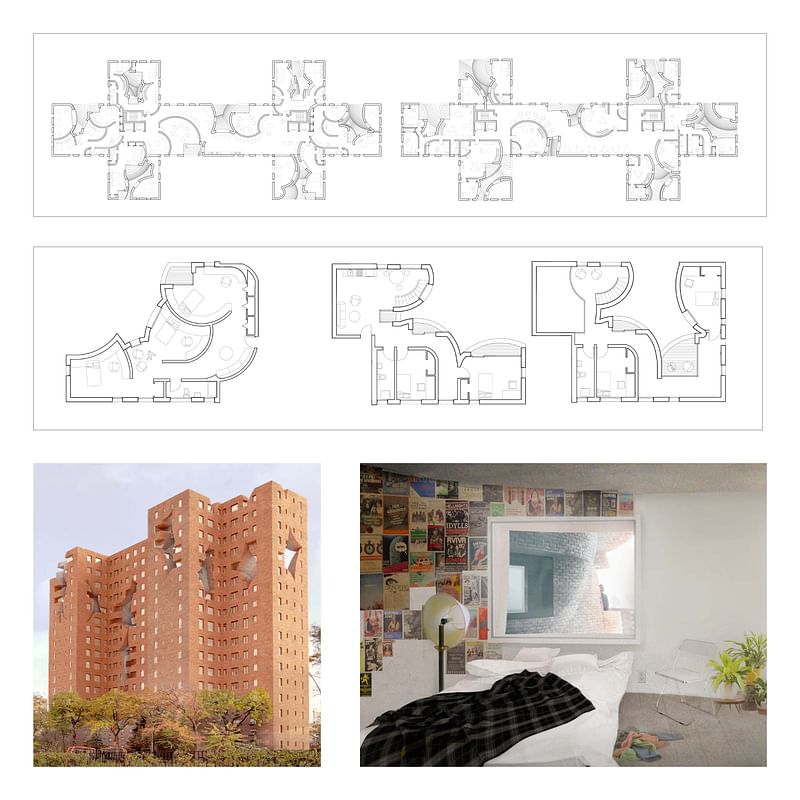

Project description: "The year is 2035, as the ratio of luxury to affordable housing causes a major recession, former luxury condos end up being transformed for other housing purposses. As the crisis of homelessness becomes even more dire, and as the consequences of mass incarceration occurring earlier in the millennium become more visible, transitioning housing for returning citizens becomes more and more necessary.
The location is Stuyvesanttown in New York City. Planned originally in 1942 as postwar-housing, it became a private development with its spaces being constantly re-adapted for increasingly high rent prices. In the year 2035, level 10 to 15 of Stuyvensanttown 409 E 14th St, apartment complexes that had been adapted to extravagant luxury apartments, are transformed into transitional housing.
Transformed to house people leaving prison, these become a way of rehabilitating people. It contains apartments, as well as dorm-like units, that aim to help people take the one of the first steps during such a critical time, to find safe shelter. Containing also classrooms, offices and conference spaces, these spaces also house institutions and non-profits aiming to help them take the steps to self-sufficiency."
Honorable Mention: Re-Grounded
Participant: Andrew Economos Miller
Honorable Mention: Home During Sickness
Participants: Yuexin Yu & Dessery Dai
Director’s Choice: The Tiers
Participants: Hiba Charek-Brewster & Jocelyn Hernandez
Director’s Choice: Bring Your Home
Participants: Felix Kim, Pui Luk & Zeb Saiyed
Director’s Choice: The Cyclic Home
Participant: Gary Chung
Pragmatic Award: House is Not a Home
Participants: Qin Ye Chen & Yiwen Wang
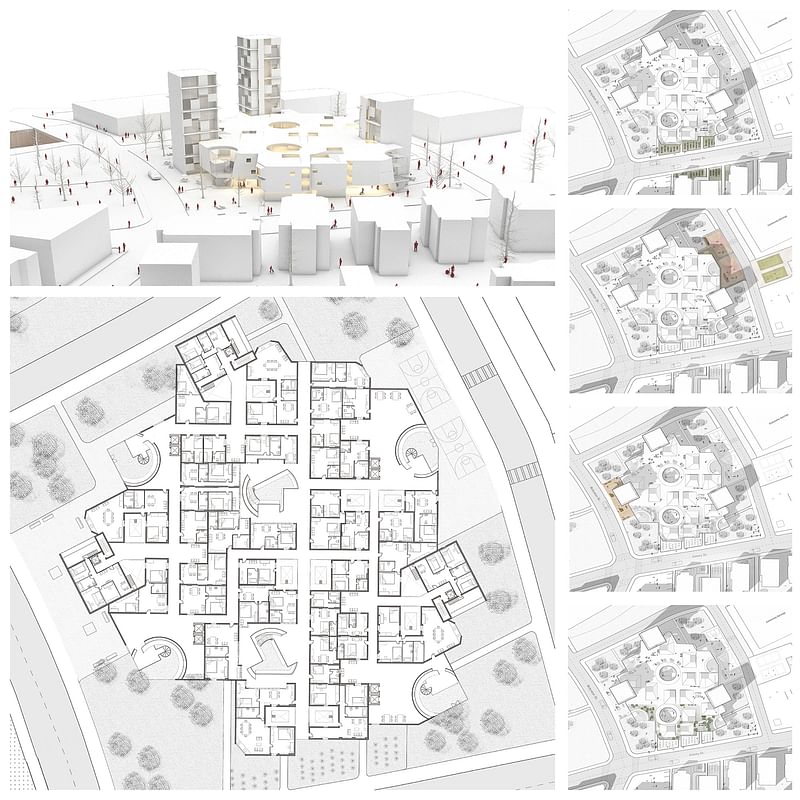

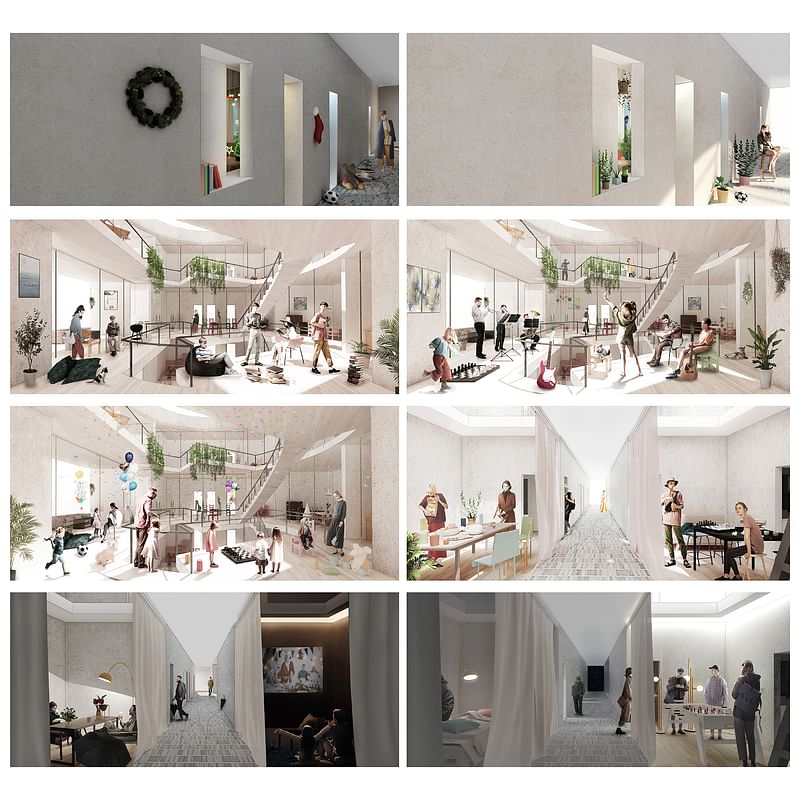

Project description: "'A House is Not a Home' addresses central questions that resonate in important ways with life in our cities today: 'How can architecture offer a remedy to social isolation?' and 'Can architecture organize different scales of community engagement over different time frames?'
This multifamily housing design redefines home as a space for knowing and engaging with objects and others for some amount of time. It acknowledges that the current housing system no longer responds to the need for community engagement or contributes to building higher levels of community attachment. The project manifests architecturally multiple time scales of knowledge, awareness, and engagement of one's neighbors. Whether it is knowing your neighbors through windows over the years, a space occupied by different inhabitants for certain days of the week, or objects collected in treasure chambers changing by the hours.
This design combines a range of dwelling types in varying configurations and all seamlessly synthesized on the site. This range of apartment types and the idea of overlapping shared spaces that oscillate between private and public realms are used as an important component of community building and engagement. Furthermore, the aggregation of these varied units in different scalar configurations ranging from low to mid-rise building forms suggest choices in terms of living opportunities for different demography across ages as well as income groups. Most critically, these objectives are integrated into a form that is responsive to the urban fabric and context in which it is situated. The project suggests a new form of urban living that is socially inclusive and architecturally accommodative of varying lifestyles and cultural aspirations. In addition, the human-centric approach and experiential imagination of space have resulted in inventive places of encounters, which will "serve as a remedy to social isolation" through enhancing community engagement."
Honorable Mention: The Home Alive
Participant: Tianyi Wang
Honorable Mention: Remoting
Participants: Andrew Miller & David Ruperti
Director’s Choice: My Your His Her It’s Our Their Home
Participant: Moones Mirbeygi
Director’s Choice: Living in Motion
Participant: Mete Cem Arabaci
Director’s Choice: Couch House
Participant: Lourenço Vaz Pinto
The 2020 HOME jury panel was comprised of Tatiana Bilbao (Founder, Tatiana Bilbao Estudio); Sean Canty (Principal, Studio SC); Vishaan Chakrabarti (Founder, PAU); J. Yolande Daniels (Founder & Design Principal, studioSUMO); Neil Denari (Founder & Principal, Neil M. Denari Architects); Peter Eisenman (Founder & Principal, EISENMAN ARCHITECTS); Amanda Levete (Principal, AL_A); Aya Maceda (Founder & Principal, actLAB); Toshiko Mori (Founder & Principal, Toshiko Mori Architect); Jennifer Newsom (Founder, Dream the Combine; Assistant Professor University of Minnesota); William O’Brien Jr. (Principal, WOJR; Professor, MIT Department of Architecture); Clark Thenhaus (Founding Director, Endemic Architecture); and Andrew Zago (Principal, Zago Architecture).
RELATED COMPETITION The HOME Competition 2020

RELATED NEWS Architects reimagine domestic space in the 2019 HOME Competition


Share
0 Comments
Comment as :